Stress Granules Determine the Development of Obesity-Associated Pancreatic Cancer
- PMID: 35674408
- PMCID: PMC9357213
- DOI: 10.1158/2159-8290.CD-21-1672
Stress Granules Determine the Development of Obesity-Associated Pancreatic Cancer
Abstract
Obesity is a global epidemic and a major predisposing factor for cancer. Increasing evidence shows that obesity-associated stress is a key driver of cancer risk and progression. Previous work has identified the phase-separation organelles, stress granules (SG), as mutant KRAS-dependent mediators of stress adaptation. However, the dependence of tumorigenesis on these organelles is unknown. Here, we establish a causal link between SGs and pancreatic ductal adenocarcinoma (PDAC). Importantly, we uncover that dependence on SGs is drastically heightened in obesity-associated PDAC. Furthermore, we identify a previously unknown regulator and component of SGs, namely, the serine/arginine protein kinase 2 (SRPK2), as a specific determinant of SG formation in obesity-associated PDAC. We show that SRPK2-mediated SG formation in obesity-associated PDAC is driven by hyperactivation of the IGF1/PI3K/mTOR/S6K1 pathway and that S6K1 inhibition selectively attenuates SGs and impairs obesity-associated PDAC development.
Significance: : We show that stress adaptation via the phase-separation organelles SGs mediates PDAC development. Moreover, preexisting stress conditions such as obesity are a driving force behind tumor SG dependence, and enhanced SG levels are key determinants and a chemopreventive target for obesity-associated PDAC. This article is highlighted in the In This Issue feature, p. 1825.
©2022 American Association for Cancer Research.
Conflict of interest statement
Figures
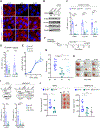
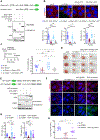

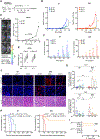
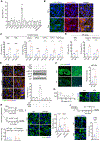

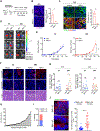
Similar articles
-
Stress granules are not present in Kras mutant cancers and do not control tumor growth.EMBO Rep. 2024 Nov;25(11):4693-4707. doi: 10.1038/s44319-024-00284-6. Epub 2024 Oct 10. EMBO Rep. 2024. PMID: 39390257 Free PMC article.
-
Stress granules dynamics and promising functions in pancreatic cancer.Biochim Biophys Acta Rev Cancer. 2023 May;1878(3):188885. doi: 10.1016/j.bbcan.2023.188885. Epub 2023 Mar 28. Biochim Biophys Acta Rev Cancer. 2023. PMID: 36990249 Review.
-
Stress and Obesity Signaling Converge on CREB Phosphorylation to Promote Pancreatic Cancer.Mol Cancer Res. 2025 Mar 3;23(3):236-249. doi: 10.1158/1541-7786.MCR-24-0785. Mol Cancer Res. 2025. PMID: 39642318
-
BRSK2 induced by nutrient deprivation promotes Akt activity in pancreatic cancer via downregulation of mTOR activity.Oncotarget. 2017 Jul 4;8(27):44669-44681. doi: 10.18632/oncotarget.17965. Oncotarget. 2017. PMID: 28591720 Free PMC article.
-
Obesity-Induced Adipose Tissue Inflammation as a Strong Promotional Factor for Pancreatic Ductal Adenocarcinoma.Cells. 2019 Jul 3;8(7):673. doi: 10.3390/cells8070673. Cells. 2019. PMID: 31277269 Free PMC article. Review.
Cited by
-
Onco-condensates: formation, multi-component organization, and biological functions.Trends Cancer. 2023 Sep;9(9):738-751. doi: 10.1016/j.trecan.2023.05.006. Epub 2023 Jun 20. Trends Cancer. 2023. PMID: 37349246 Free PMC article. Review.
-
Decoding the obesity-cancer connection: lessons from preclinical models of pancreatic adenocarcinoma.Life Sci Alliance. 2023 Aug 30;6(11):e202302228. doi: 10.26508/lsa.202302228. Print 2023 Nov. Life Sci Alliance. 2023. PMID: 37648285 Free PMC article. Review.
-
Stress Granule Core Protein-Derived Peptides Inhibit Assembly of Stress Granules and Improve Sorafenib Sensitivity in Cancer Cells.Molecules. 2024 May 4;29(9):2134. doi: 10.3390/molecules29092134. Molecules. 2024. PMID: 38731625 Free PMC article.
-
Stress granule formation is regulated by signaling machinery involving Sch9/Ypk1, sphingolipids, and Ubi4.Theranostics. 2025 Jan 6;15(5):1987-2005. doi: 10.7150/thno.98199. eCollection 2025. Theranostics. 2025. PMID: 39897563 Free PMC article.
-
Genetics and biology of pancreatic ductal adenocarcinoma.Genes Dev. 2025 Jan 7;39(1-2):36-63. doi: 10.1101/gad.351863.124. Genes Dev. 2025. PMID: 39510840 Free PMC article. Review.
References
Publication types
MeSH terms
Substances
Grants and funding
LinkOut - more resources
Full Text Sources
Medical
Molecular Biology Databases
Miscellaneous

